If you’re wondering whether you can cultivate miniature roses in an outdoor setting, we’re here to provide you with the answer! Mini roses are a great way to bring vibrant colors and smells into your garden or outdoor spaces, without requiring a whole lot of time-consuming maintenance. Planting mini roses outside is not only easy but also very satisfying as these lovely flowers bring life to any space in which they’re planted. In this blog post, we’ll offer tips on how to get started with planting mini roses outdoors – from researching the right types of soil and climates they need for optimal growth to understanding when and how much water they require.
Mini Roses
Mini roses, referred to as miniature roses as well, bring a lovely touch to any outdoor area. With their vibrant colors, sweet aroma, and relative ease of care, they are the perfect choice for novice gardeners and experienced green thumbs alike. So get your gardening tools ready and let’s embark on this horticultural adventure together!
Characteristics & Types
Miniature roses are dense, bushy roses that typically grow to be 1-2 feet tall. They feature lush, green foliage and clusters of small, vibrant roses, blooming from late spring until the first frost. These roses are known for their hardiness and resistance to diseases, making them an excellent choice even for those without much gardening experience.
Miniature roses have a fascinating history. They were first cultivated in the 17th century in China and later introduced to Europe. Their popularity grew significantly in the 20th century when rose hybridizers began to develop a wider array of colors and varieties. [1]
There are numerous types of mini roses available, each with their own unique features:
- ‘Cupcake’: This is a popular variety with pale pink, ruffled blooms and a light, sweet fragrance.
- ‘Child’s Play’: This variety features beautiful, multi-colored roses. The petals are pink on the outside and cream on the inside, offering a delightful color contrast.
- ‘Sun Sprinkles’: As its name suggests, this variety features vibrant yellow roses that are certain to add a cheerful touch to any garden area.
- ‘Ruby Ruby’: This particular type distinguishes itself with its deep crimson blossoms and lustrous, rich green leaves. [2]
- ‘Debut’: This type is known for its large, double, pink blooms which stand out against its glossy, deep green leaves.
Popularity of Mini Roses as outdoor decoration
With their compact size, mini roses have gained significant popularity as outdoor decorations. Miniature roses are in high demand due to their versatility and captivating aesthetic charm. These miniature blooms can be planted in borders to add depth and color, or they can serve as standalone features in pots, containers, or hanging baskets. Mini roses are also perfect for adorning patios, balconies, or small garden spaces where larger rose varieties may become obtrusive.
The allure of mini roses extends beyond their visual appeal.Additionally, these enchanting blooms possess a delightful, enduring aroma that introduces an added sensory dimension to any outdoor environment. Whether day or night, the aroma wafting from a mini rose garden creates an inviting and enchanting ambiance.
In many ways, mini roses offer the beauty and grandeur of traditional roses without the need for ample space or complex gardening technique. They are the embodiment of the saying “Good things come in small packages.” The continual interest in and increasing demand for mini roses as outdoor decorations is a testament to their attractiveness, practicality, and charm.
Considerations Before Planting Mini Roses Outside
Before you start planting mini roses outside, it’s essential to take into account several crucial factors. It is important to understand the specific needs of these charming flowers to ensure their healthy growth and continual bloom.
Choice of Location
The location plays a crucial role in growing mini roses successfully. These flowers thrive in sunlit areas, requiring at least six hours of direct sunlight daily. Hence, opt for a location within your garden that enjoys abundant sunlight throughout the entire day. However, if you live in a particularly hot climate, a location with morning sun and partial afternoon shade may be more suitable to protect the roses from extreme heat.
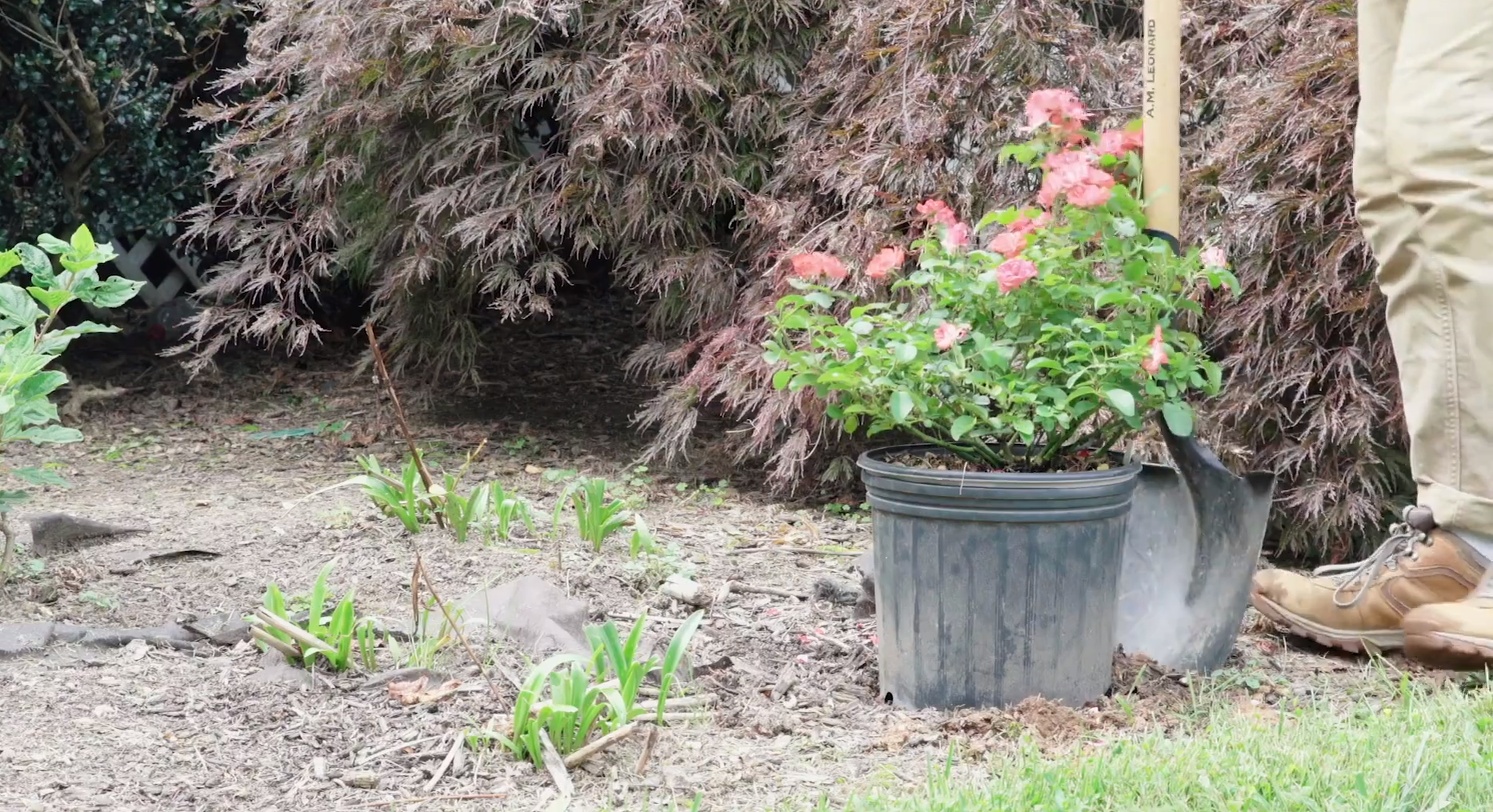
Pest and Disease Control
Mini roses are relatively disease resistant, but they can still be affected by certain pests and diseases. Regular examination of the plants will aid in the early detection of any potential problems. Should you detect any indications of pests or disease, it’s essential to promptly address the issue by treating the roses to prevent its further spread.
Winter Care
In colder climates, mini roses need some extra care over the winter. They should be covered with mulch or rose cones to protect them from extreme cold and wind. Additionally, watering should be reduced during this time but not completely stopped.
By taking these considerations into account, you can create a thriving mini rose garden that will provide you with beautiful blooms and fragrant scents for many seasons to come. Happy gardening!
Steps to Successfully Plant Mini Roses Outside
With an understanding of the pre-planting considerations in mind, let’s delve into the procedure for effectively planting these captivating mini roses in your outdoor area. With careful planning and preparation, you can transform your garden, patio, or balcony into an enchanting oasis brimming with vibrant, fragrant mini roses.
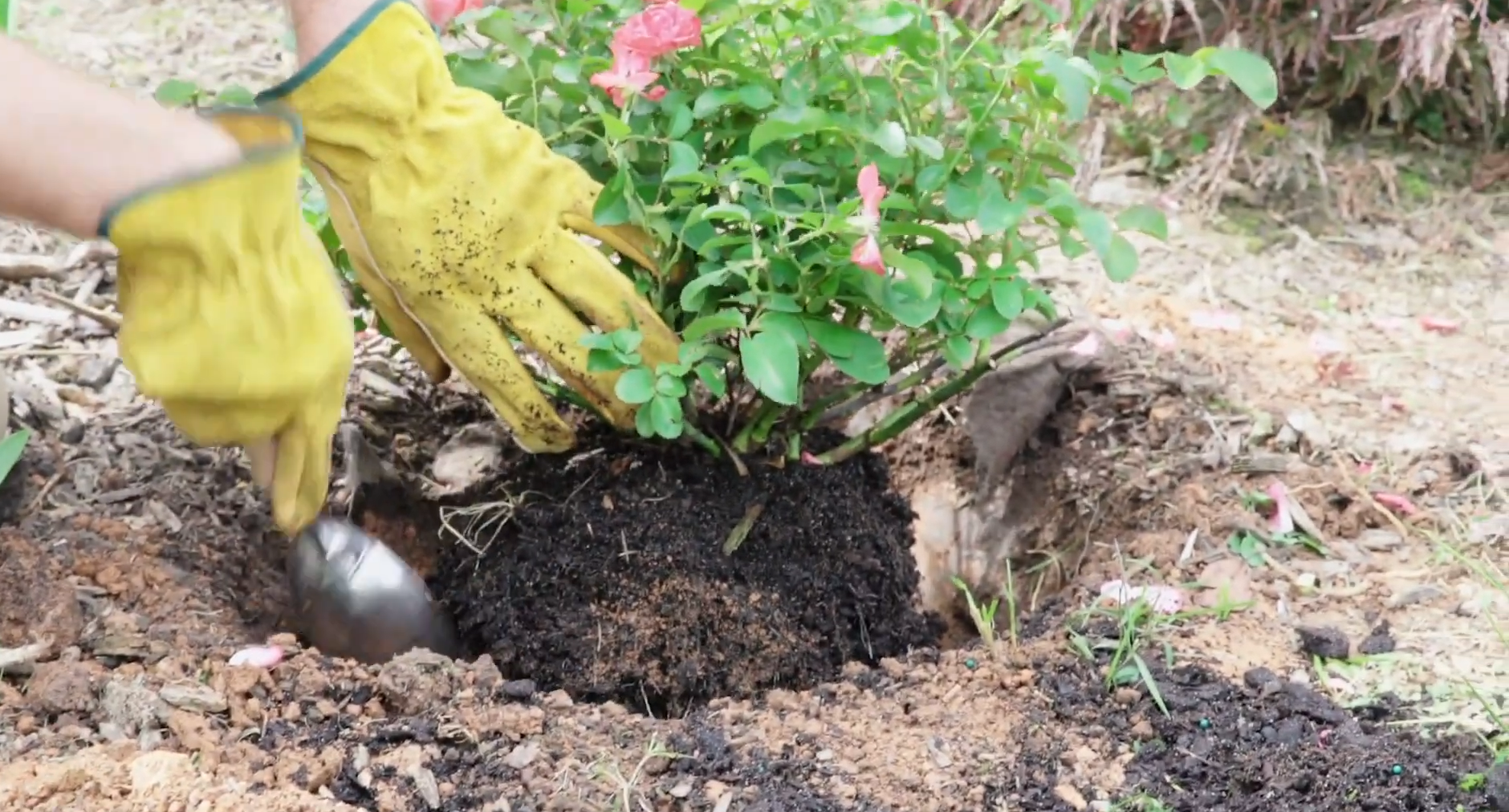
Transplantation Timing
This factor influences the plant’s capacity to acclimate to its new surroundings, establish its roots, and ultimately achieve successful growth. Typically, the best time to transplant flowers is in the early spring or fall. This allows the plants to establish their roots during the temperate months before the harsh conditions of summer or winter set in. In spring, transplant them after the last frost but before they begin actively growing. During the autumn season, consider transplanting them approximately six weeks before the anticipated arrival of the first frost. By transplanting at these times, you increase the chances of success, giving your mini roses the best possible start in their new home.
Site Selection
Choosing the right site for your mini roses is a crucial step in the planting process. The site you select will directly impact the health and growth of your roses. In order to flourish, roses require a location that receives at least six hours of direct sunlight daily. The reason for this is that sunlight stimulates the photosynthesis process, leading to the production of more blooms.
The best site for your mini roses is one that not only receives ample sunlight but also offers sufficient space for the roses to grow and spread. It should be away from larger plants that might overshadow the roses or compete for resources. Remember, a well-chosen site forms the foundation for a flourishing mini rose garden.
Soil Preparation
Proper soil preparation is fundamental to the successful growth of mini roses. The soil should possess excellent drainage qualities, a loamy texture, and an abundance of organic matter to support healthy growth. It’s crucial to check the soil’s texture and composition before planting. The ideal soil for mini roses feels crumbly, contains a mix of clay, silt, and sand, and is dark in color due to the presence of organic matter.
Testing the soil’s pH level is also important, as it impacts the availability of nutrients to the plants. Mini roses have a preference for soil with a slightly acidic to neutral pH, typically falling within the range of 6.0 to 6.5. [3] You can verify and adjust the soil pH using a soil pH tester as needed.
If your soil doesn’t meet these criteria, amending it may be necessary. If the soil is too sandy or too clayey, you can improve its texture and water-holding capacity by adding well-rotted compost or aged manure. If the soil’s pH isn’t in the preferred range, you may need to add garden lime to raise a low pH or sulfur to lower a high pH.
Transplantation and Growing Technique
Once the site and soil are prepared, you’re ready to proceed with the transplantation and growing of your mini roses. Start by soaking the roots of the roses in a bucket of water for several hours before planting. This will hydrate the roots and prepare them for the transition.
Carefully remove the rose from its container, making sure to avoid damaging the roots. Excavate a hole that is twice the width and slightly deeper than the root ball. When situating the rose within the hole, ensure that the bud union, which is the enlarged section of the stem where the rose was grafted onto the rootstock, is positioned at the same level as or slightly higher than the surrounding soil surface.
Once the rose is in place, provide it with a thorough watering, and then add a layer of mulch around the base. This will help retain moisture and deter the growth of weeds. Staking the roses might be necessary if they’re tall or planted in a windy location.
Remember to water the roses regularly in the weeks following transplantation to encourage root establishment. As the roses grow, you can start to implement a regular feeding schedule using a balanced, rose-specific fertilizer.
Watering and Mulching
Watering and mulching are crucial steps in maintaining a healthy mini rose garden. The key to watering mini roses is to keep the soil consistently moist, but not overly wet. Optimal watering practices involve deep and infrequent watering, as this promotes the development of strong and deep root systems in roses. Early morning is the ideal time for watering as it allows the water to soak into the soil while minimizing evaporation.
Mulching serves a dual purpose in a mini rose garden: moisture retention and weed prevention. By applying a layer of mulch, typically measuring 2 to 3 inches in depth, around your rose plants, you can effectively preserve soil moisture, thereby reducing the necessity for frequent watering. Organic mulch like wood chips or straw can also improve soil health as it decomposes over time, adding valuable nutrients back into the soil. Mulch serves as a barrier to weed growth, preventing these plants from competing with the roses for resources.
Remember, the aim is to create an environment for your mini roses that mimics their natural habitat, and proper watering and mulching play a key role in achieving this goal.
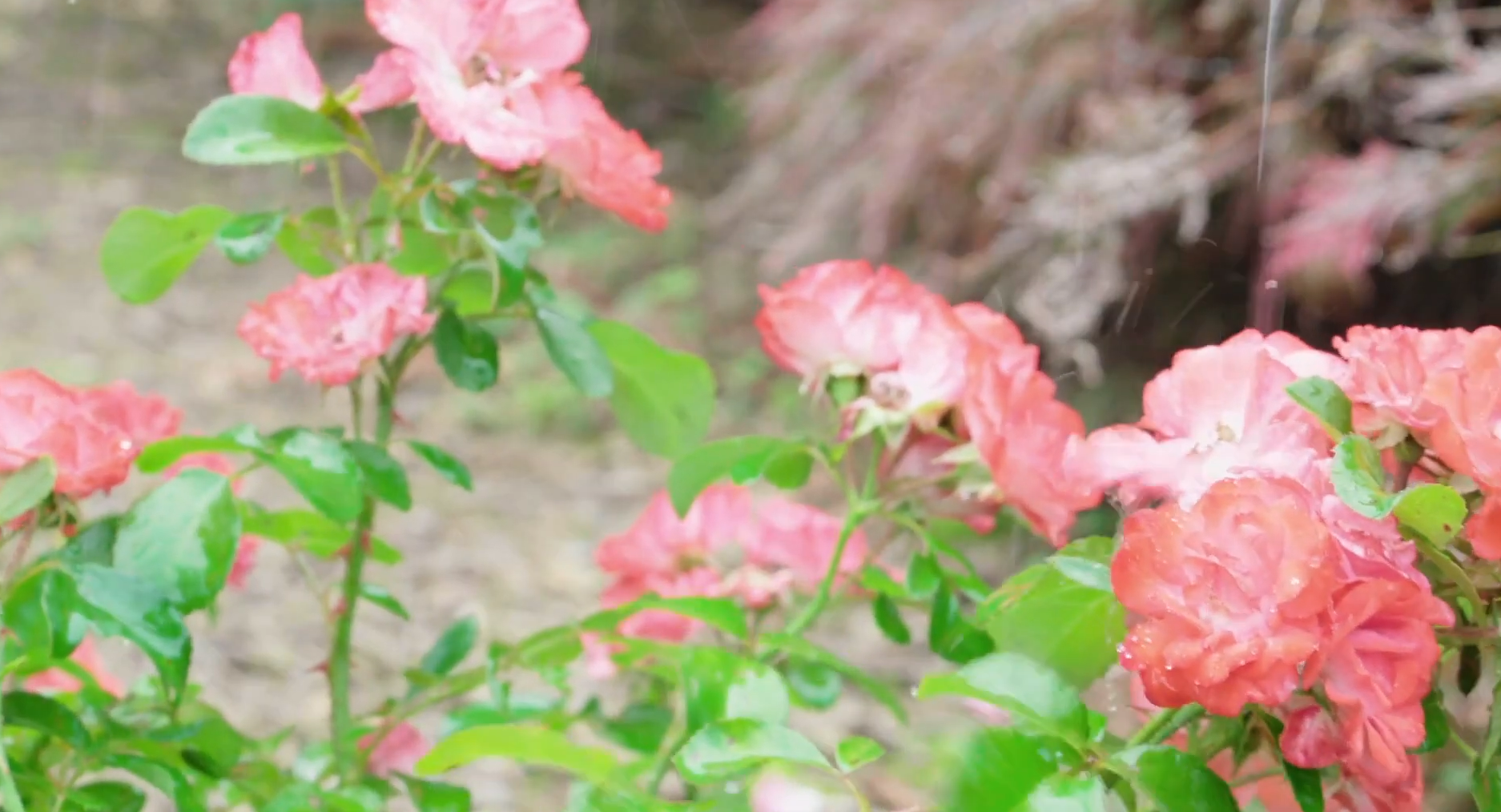
Pruning and Maintenance
Regular pruning and maintenance are key to ensuring the health, growth, and bloom production of your mini roses. Proper pruning enhances air circulation, encourages new growth, and helps keep the plants free from disease.
Regular maintenance is also crucial for the success of your mini rose garden. Regularly clean up fallen leaves and other plant debris to prevent the spread of diseases.
Caring for Outdoor Mini Roses
In addition to providing the right conditions for growing mini roses indoors, it’s also important to understand the special requirements needed when caring for outdoor ones. Mini rose plants are more tolerant of cold weather than full-sized varieties and can survive temperatures as low as 10°F. However, they still need some protection from harsh winter winds and frost.
In the summertime, outdoor mini roses need plenty of sunlight and regular watering to remain healthy and productive. But be mindful not to over-water them, as too much water can lead to root rot. Using a soaker hose or drip irrigation system can help ensure that the plants receive enough water without becoming oversaturated.
Finally, remember to feed your mini roses regularly with a rose-specific fertilizer throughout the growing season for optimal bloom production. With the right care, you can enjoy beautiful blooms all summer long.
Addressing Potential Challenges
Like all plants, mini roses are not immune to challenges. You may encounter issues such as pests, diseases, or unfavorable weather conditions. Common issues that mini roses can encounter include aphid infestations, black spot disease, and powdery mildew. Aphids can be managed by using insecticidal soap or introducing natural predators such as ladybugs. When dealing with fungal diseases like black spot and powdery mildew, it’s essential to promote adequate air circulation around your plants and refrain from watering the foliage directly to maintain a dry environment.
In terms of weather challenges, frosts can cause significant damage to mini roses. When frost is forecasted, it’s advisable to contemplate safeguarding the plants by covering them with frost cloth or blankets, offering an extra layer of protection against the cold. During extreme heat waves, ensure your roses are well-watered and consider shading them during the hottest part of the day.
Lastly, in regions with heavy clay or sandy soils, growing roses can be a challenge. Amending the soil with organic matter like compost can improve its structure and fertility, making it more suitable for growing roses.
Decorative Ideas for Home and Garden
Mini roses can serve as charming additions to both your home and garden, thanks to their small size, vibrant colors, and delightful fragrance. Indoors, mini roses can be incorporated into your décor in various creative ways. Consider creating a mini rose centerpiece for your dining table or placing pots of mini roses on windowsills, bookshelves, or desk corners to add a touch of nature and color to your interior spaces. You can also use mini roses in decorative wreaths or garlands for special occasions.
Outdoors, mini roses can be used to line walkways, border flower beds, or as focal points in a rock garden. Their size makes them ideal for container gardening, allowing you to move them around as needed to create different looks or to provide them with optimal growing conditions. Try planting different colors of mini roses together in a large container for a vibrant, eye-catching display.
With a bit of creativity and care, mini roses can add a touch of elegance and sophistication to your home and garden décor. Whether you’re an experienced gardener or a novice, these petite roses offer endless possibilities for infusing your spaces with color, fragrance, and charm.
Frequently Asked Questions
How long do mini roses last outside?
Mini roses can thrive outdoors for many years with the right care. Depending on the specific variety and the growing conditions, a healthy mini rose bush can live for 30 to 40 years. However, it’s important to note that these plants require regular care, including proper watering, feeding, pruning, and protection from pests and diseases to ensure their longevity and productivity.
How do you keep mini roses alive outside?
Keeping mini roses alive outside involves providing them with the right conditions and care. Firstly, mini roses require full sun, so plant them in a location that gets at least six hours of direct sunlight every day. They also need well-draining soil to prevent waterlogging and root rot. Regular watering is essential, but avoid overwatering as this can lead to diseases. Feed your mini roses with a rose-specific fertilizer during the growing season to promote healthy growth and abundant blooms. It’s also important to prune your mini roses annually to encourage new growth and maintain their shape. Lastly, monitor your plants for signs of pests and diseases and take immediate action at the first sign of trouble. With proper care, your outdoor mini roses can thrive and produce beautiful blooms for many years.
Can mini roses survive winter?
Yes, mini roses can survive winter, especially if they are planted in the ground where they can benefit from the earth’s natural insulation. However, they do require some special care to protect them from freezing temperatures. This includes mulching around the base of the plant to protect the roots, covering the plants with frost cloth or blankets during particularly cold spells, and planting them in a sheltered location, such as on the north side of a building, where they will be protected from harsh winter winds. If you are growing mini roses in containers, consider moving them indoors or to a sheltered location during the winter to protect them from the elements. With proper winter care, your
Are miniature roses inside or outside plants?
Miniature roses are versatile plants and can be successfully grown both inside and outside. When grown indoors, they add a splash of color and a touch of nature to your home decor. They need a bright location, preferably a south-facing window, and consistent care, including regular watering, feeding, and pest management.
Outdoors, mini roses can handle a range of climates and conditions. They are often used to line walkways, accent garden beds or grown in containers. They need at least six hours of sunlight each day, well-draining soil, and regular care to thrive.
Useful Video: Miniature Roses Plant Care & Growing Guide
Conclusion
If you’ve been curious as to whether and how you can plant mini roses outside, there is something for everyone. For the beginner, there are creative ways to use larger plants like shade-tolerant ground cover options without having to invest in more expensive mini roses. For a more experienced gardener, the challenging selection and planting of perennial miniature rose bushes can make a lovely addition to any outdoor garden. Regardless of which route you decide to take, make sure that your soil is well drained and that you provide adequate water and pruning. Don’t be afraid to experiment! With some knowledge and direction, planting a mini rose bed can become the centerpiece of an outdoor area filled with beauty and color. So let’s get out there and get planting!
References:
- https://adamsfarms.com/gardentips/caring-for-miniature-roses/
- https://mountainvalleygrowers.com/organic-plants/rosa-sequoia-ruby-miniature-rose/
- https://www.treloarroses.com.au/pH-Imbalance-Roses






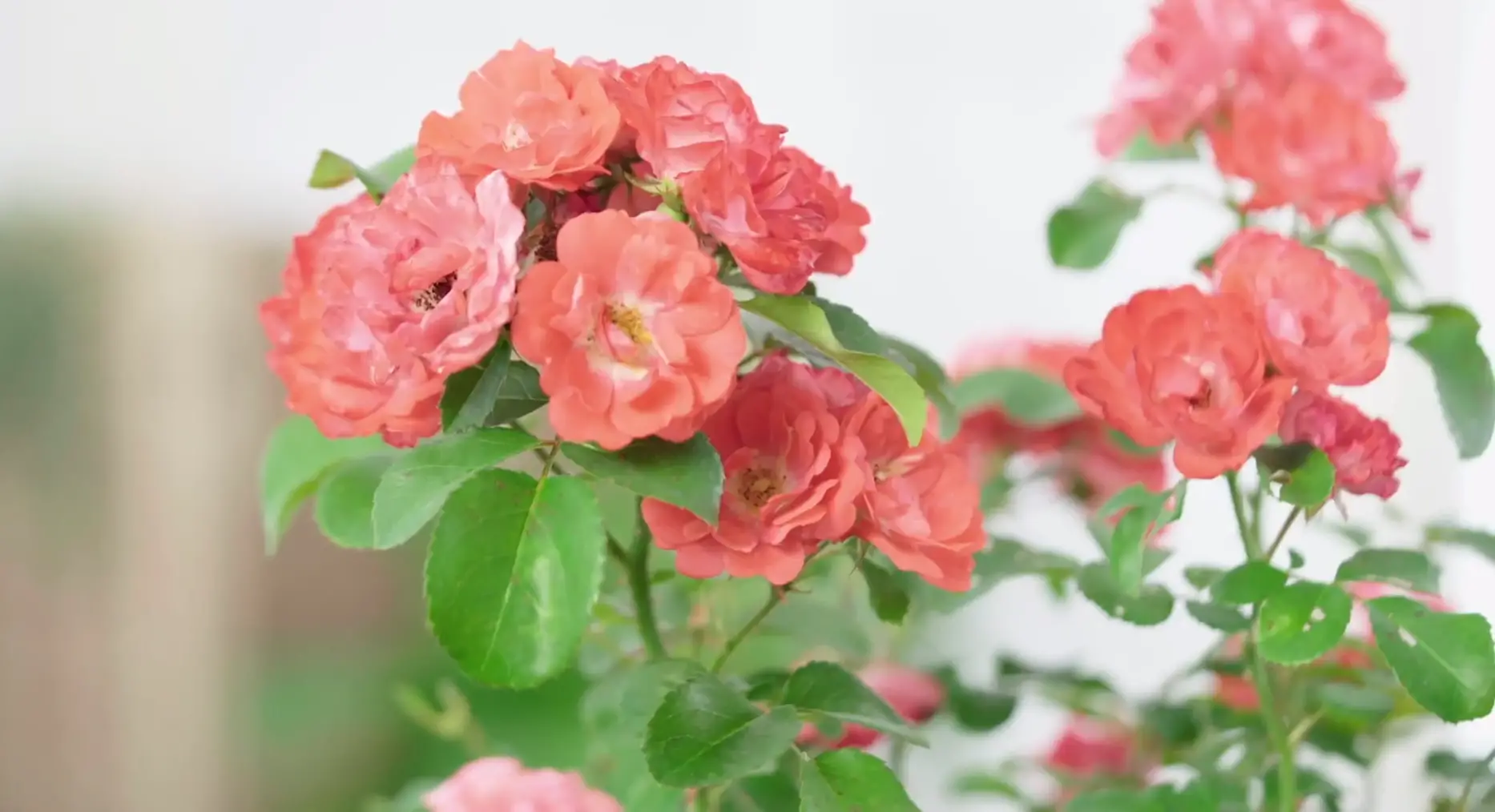
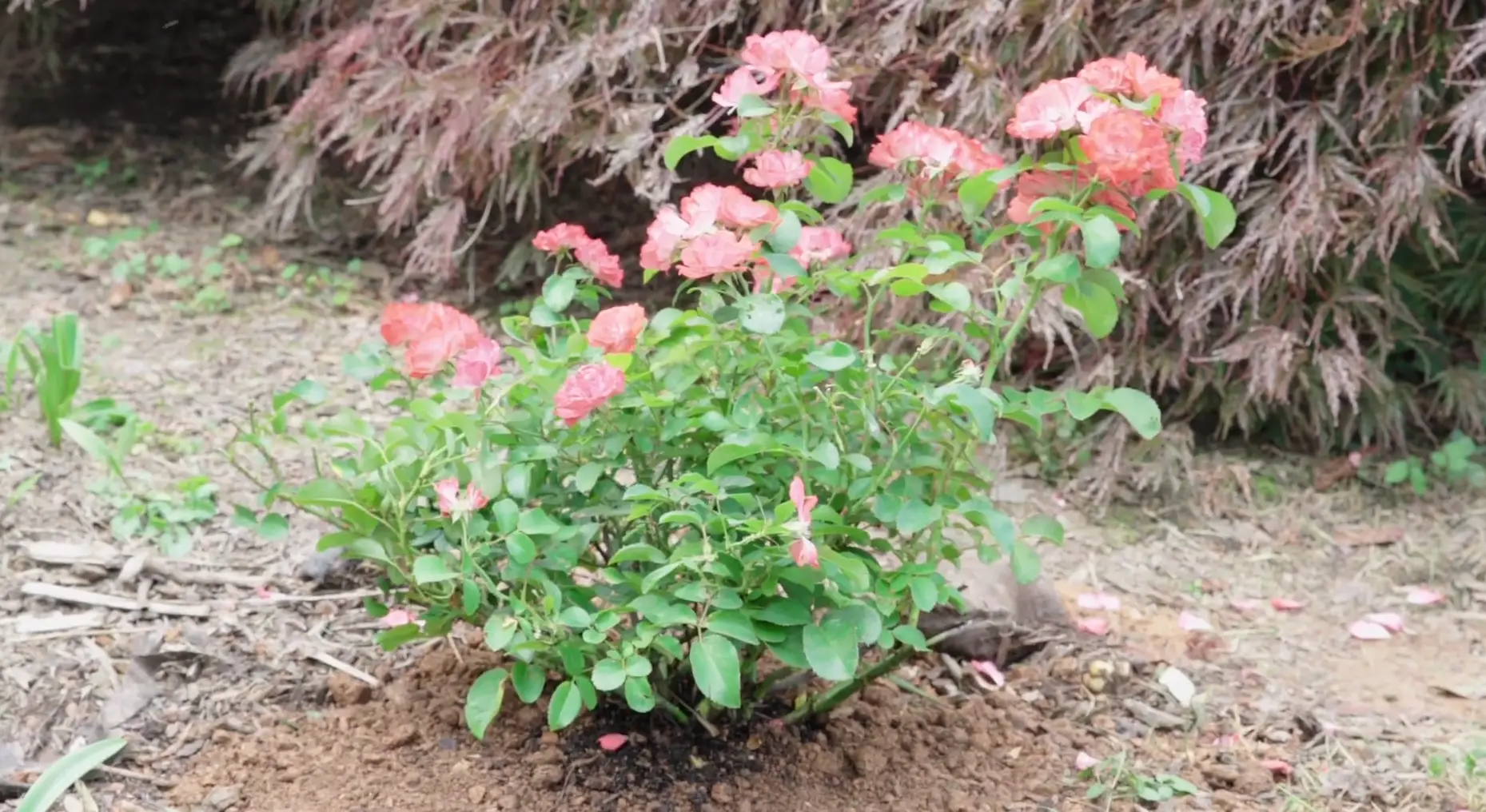
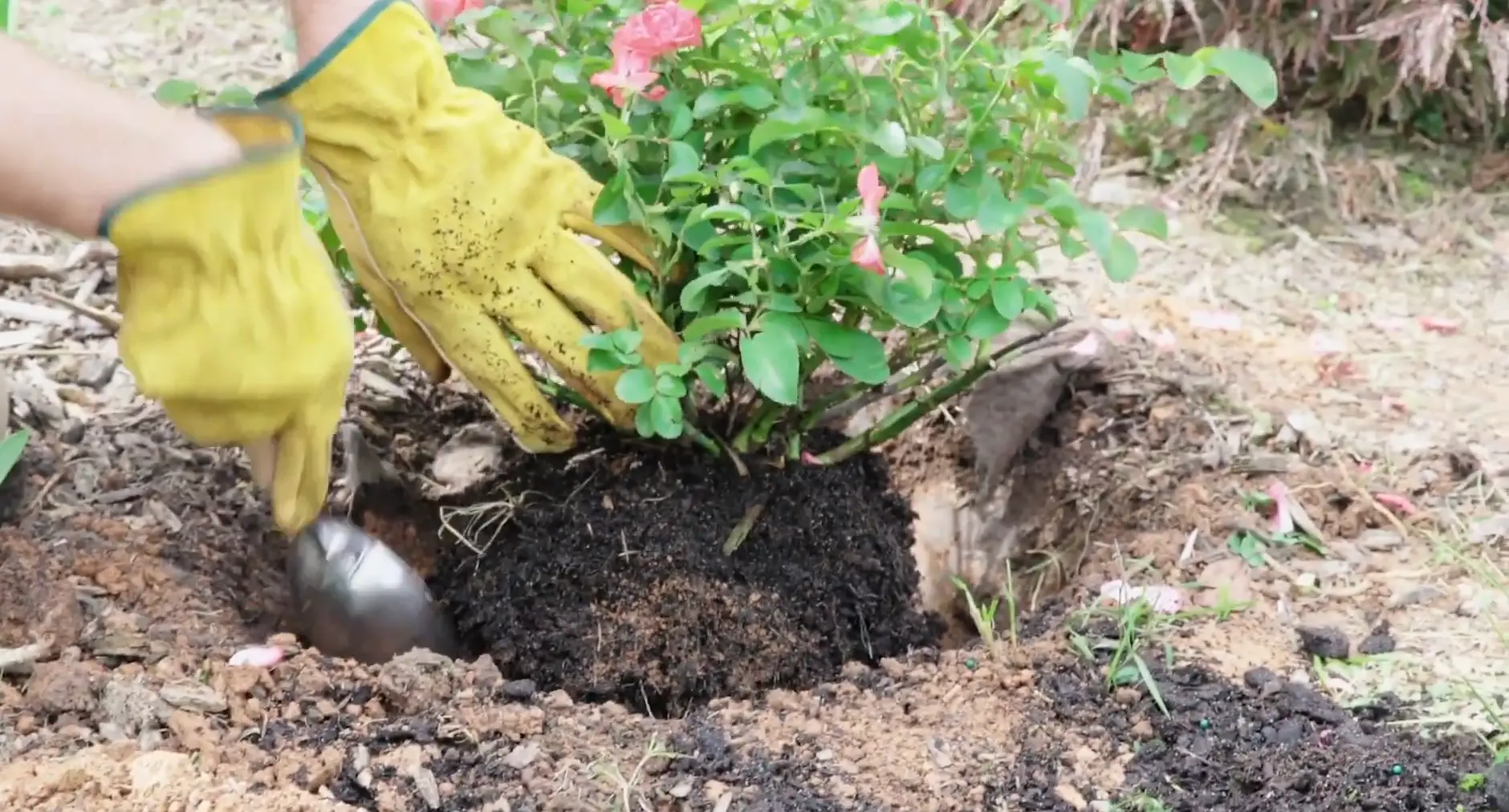
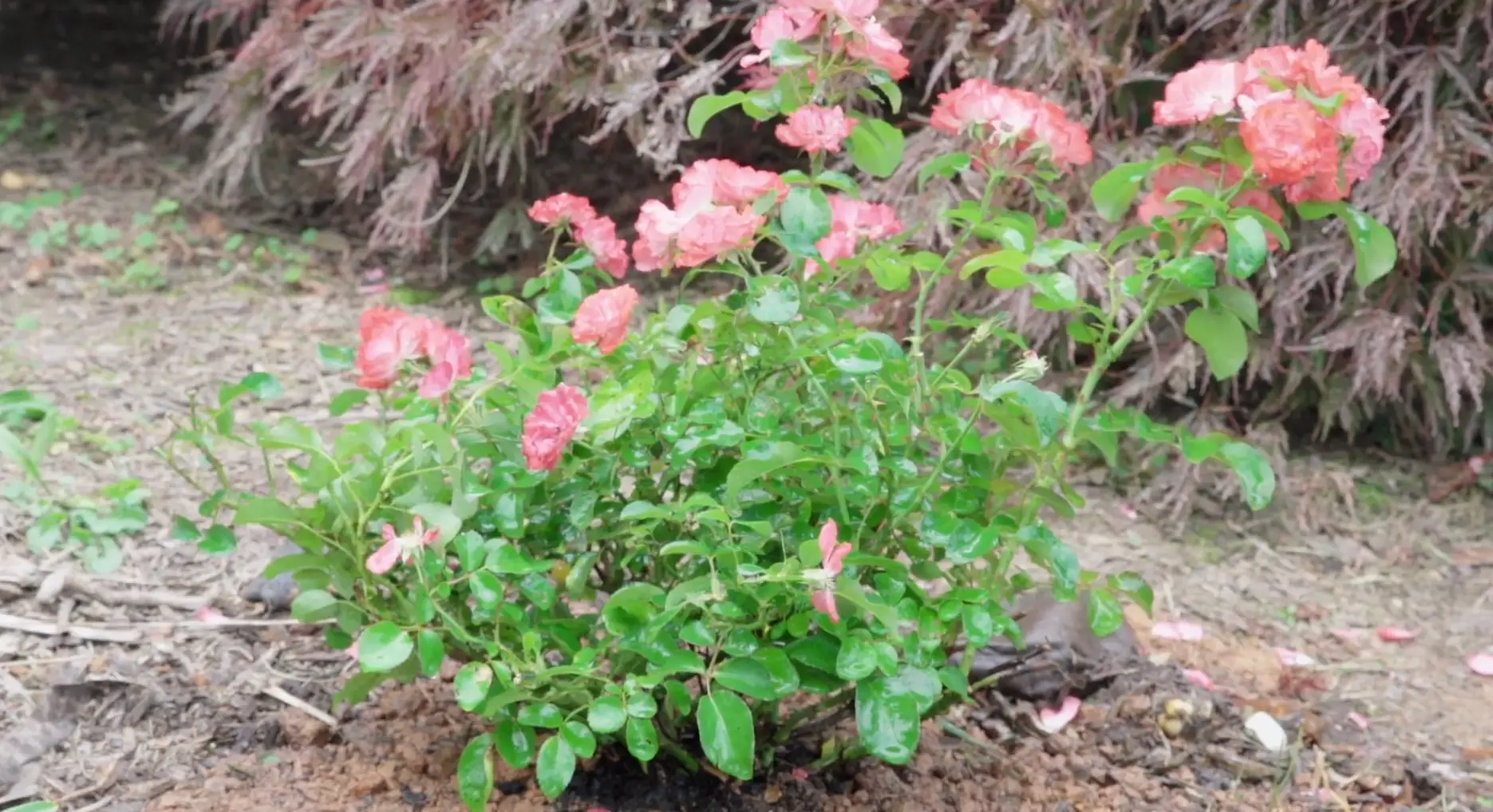




Leave a Reply
View Comments